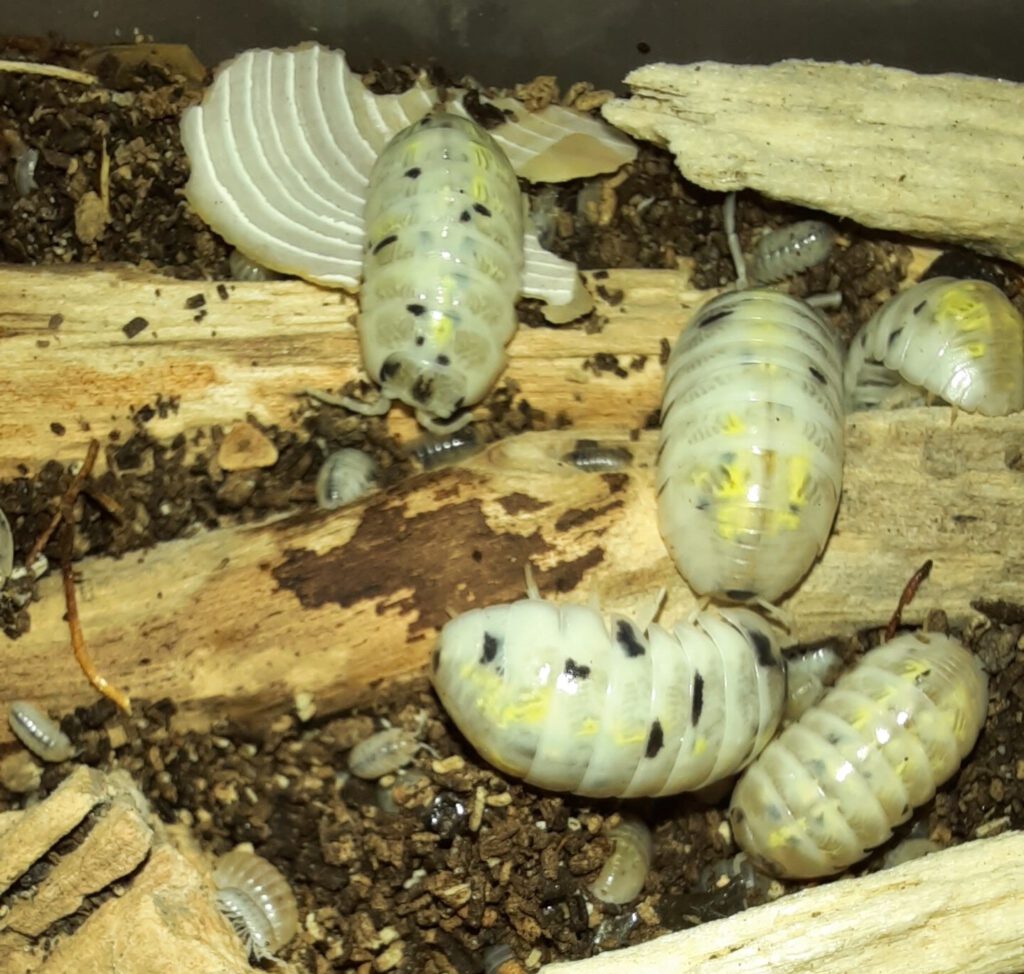picture by Liliana Sanfilippo
This article is not yet finished!
If you want to write/help with this or another (or new!) article, please contact me 🙂
(as of 17.03.2024)

| English | German | Name |
| Order | Ordnung | Isopoda |
| Suborder | Unterordnung | Oniscidea |
| Family | Familie | Armadillidiidae |
| Genus | Gattung | Armadillidium |
| Species | Art | Armadillidium nasatum |
Description
Like all Armadillidium, they can roll into a ball though they leave a little gap open and their antenna outside. They are usually 10-15 mm big but can grow up to 21 mm.
They have a little “nose” or “snout” on their face, hence the name, and usually pale stripes as seen in the picture.
In nature, they come in three different colour variations that are orange/red, black/grey and brown. “Red” is what is called “peach” in the hobby. Through breeding, a lot of nuances can be shown and they can also be very pale up to white. It is also possible that there are multiple colours present in one individual.
Habitat
Like other isopods, they hide a lot under stones and wood. They like warmth and rough-grained stony soil.
Distribution
Originally, they were mostly found in (southern) Europe but as of today they can be found in all of Europe, in North, Middle and South America, Central Asia and they have been observed in Japan and Korea. North from England they are rarely found.
Care
They can easily live in room temperature and are not super sensitive about humidity or rather a lack thereof. 50 % moisture is deemed good enough.
General care tips apply such as having a moisture gradient and lots of hiding spaces.
They do not need a special diet.
First description
Budde-Lund, G. (1885). Crustacea Isopoda Terrestria, per Familias et Genera et Species Descripta. 319 pp. Copenhagen.
You can find a download here.
Names
Deutsch: Nasenkugelassel
Englisch: Nosy Roly Poly
Synonyms
- Armadillidium nasatum var. flava Collinge, 1918
- Armadillidium nasatum var. nigrescens Collinge, 1918
- Armadillidium quadrifrons Stoller, 1902
- Armadillidium sorrentinum Verhoeff, 1908
- Armadillidium speyeri Jackson, 1923
Subspecies
- Armadillidium nasatum mehelyi Verhoeff, 1930
- Armadillidium nasatum nasatum Budde-Lund, 1885
- Armadillidium nasatum sardoum Arcangeli, 1950
Sexing
In males, the pleopods are pointed and in females, they are rectangular. In individuals smaller than 5 mm the pleopods are not yet completely differentiated and it can be hard to impossible to sex those.
Generally, males are more pigmented than females but this is not a reliable way to tell the sex since older individuals tend to have more pigments than younger ones as well.
Reproduction
This species reproduces like other isopods. The female can store sperm and they breed seasonally from spring to fall. A colony can produce multiple broods per year.
Development
The offspring are born white and with red eyes and develope their colour after about two month. They are sexually mature after about 8 month.
Genetics
Red and darker forms are genetically distinct. Their red colour is usually a recessive trait and results from missing darker pigments. But there exist dominant versions in France and maybe Virginia, USA. Not every colony contains every colour morph.
- S. L. Adamkewicz. Colour Polymorphism in the land isopod Armadillidium nasatum.
- https://en.wikipedia.org/wiki/Armadillidium_nasatum
- https://de.wikipedia.org/wiki/Armadillidium_nasatum
- https://www.marinespecies.org/aphia.php?p=taxdetails&id=257751


1 comment